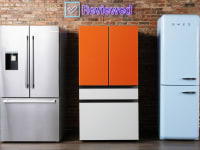What fridge style fits you best? Read this before you buy
From top-freezer to column and more
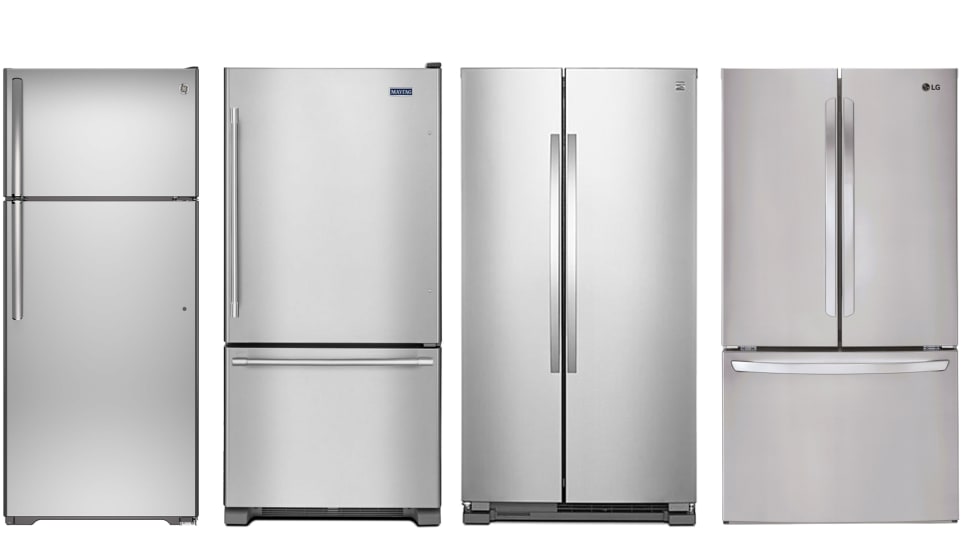 Credit:
GE, Whirlpool, Kenmore, and LG
Credit:
GE, Whirlpool, Kenmore, and LG
Products are chosen independently by our editors. Purchases made through our links may earn us a commission.
Most people don't spend their days ranking refrigerators in their head like they're trying to optimize a fantasy football team. Most people rarely think about refrigerators at all. As Reviewed’s resident fridge aficionado, I am thinking about them for you.
For anyone looking to buy a new fridge, I’m here to help. You may have some criteria you’re looking for or you may want to try a new fridge style and need more info.
Our list of the best refrigerators we’ve tested includes the full range of fridge styles. Here's a brief primer on the different fridge types, along with examples that represent each style.
Top-freezer: The old-school style
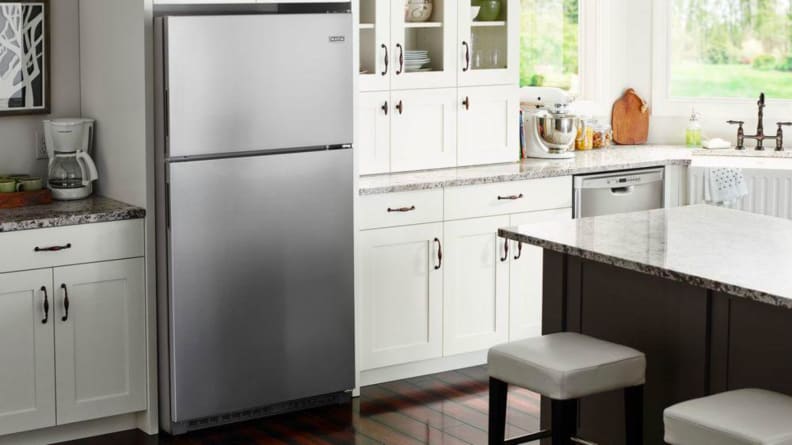
Top-freezers tend to be budget options, and the difference in quality between a good one and a bad on can be significant.
Top-freezers are a classic design that used to be ubiquitous—and in many apartment settings, still is. As this fridge type’s name clearly suggests, the freezer compartment sits at the top of the unit with a refrigerated compartment underneath.
While there are definitely some excellent top-freezer refrigerators out there, the style as a whole can vary wildly when it comes to performance. At its best, it’s a no-frills option for folks who just need a basic fridge.
If the one in your apartment is an inconsistent mess, with defrost cycles so chaotic they melt your ice cubes and freezer burn everything into astronaut food in a matter of days, it’s likely your landlord cheaped out.
If you like this style, give it another shot with a model known for reliable performance. We like the Hotpoint HPS16BTNRWW.
Bottom-freezer: The basic fridge with a better freezer
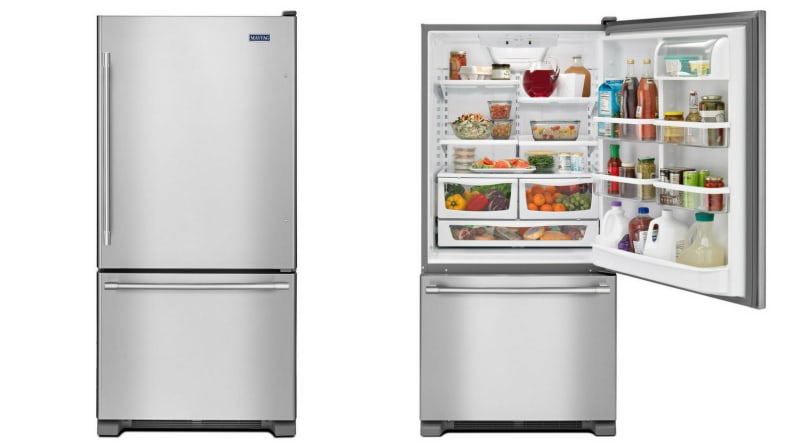
A refrigerator with a bottom freezer puts the items you use most at eye level.
Bottom-freezer refrigerators put a predictable 180° spin on the top-freezer formula by putting the freezer compartment at ground-level, almost exclusively as a drawer. This design is especially great for anyone who's had one too many frozen chicken cutlets slide out of an overstuffed freezer and directly onto their toes.
The bottom-freezer drawer can sometimes make it harder to access items that may be layered in the open space, as it's less likely to have shelving or compartments than side-by-side or quad-style fridges, but at least you can dig around for what you want without needing steel-toe boots.
While French-doors offer most of these same benefits (and have better features, too), bottom-freezers have the advantage of costing much less on average.
If you like this style, try the GE GDE25EYKFS and Hisense HRB171N6ASE.
Side-by-side: For easy access to both fridge and freezer
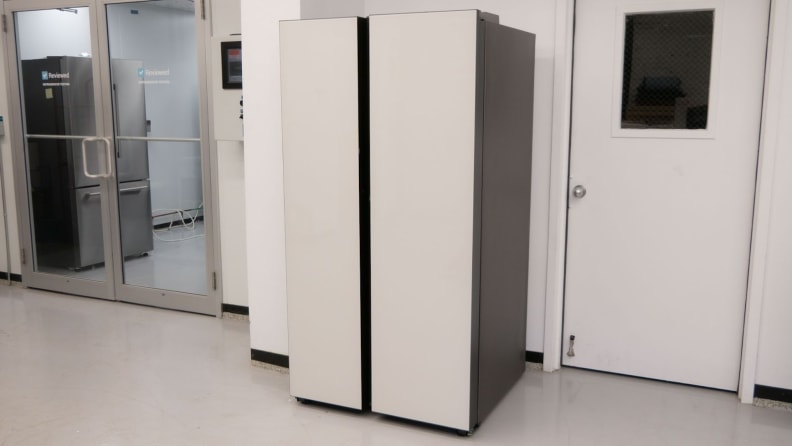
The Samsung Bespoke RS28CB7600 is the best side-by-side refrigerator we've tested.
The main selling point of a side-by-side is that it lets you access some freezer items without stooping down, as you'd need to do with a French-door or bottom-freezer fridge. It also doesn't need as much space for the doors to swing open compared to top- or bottom-freezer models.
The downside, of course, is that the two compartments are significantly thinner than in other styles of fridge. This can make it difficult or impossible to store sheet pans, frozen pizzas, or wide platters. This configuration can also reduce visibility, making it hard to find items in the tall, narrow compartments.
Another more subtle issue is that the refrigerator compartment of a side-by-side may have a pronounced temperature differential between the top and bottom. Most fridges pipe in the cold air through a vent at the top center of the back of the fridge, at which point it circulates throughout the fridge.
This means that items stored closer to this vent will be colder and items further away will be warmer—sometimes dangerously so, especially in overstuffed fridges that impede air circulation.
Since the fridge compartment is so tall in a side-by-side, this style of fridge tends to have more problems with this than any other.
If you like this side-by-side look and don’t eat a lot of frozen pizza, try the Samsung Bespoke RS28CB7600.
French-door: Easy accessibility and a great look
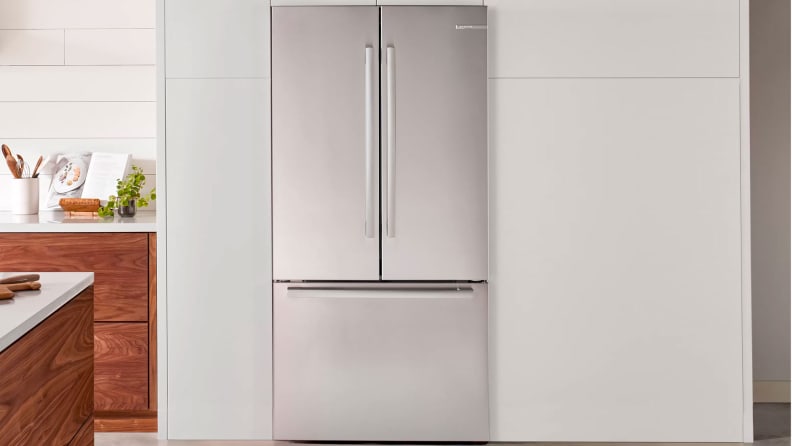
French-door fridges often have better usability and feature sets than other styles of fridge.
French-door refrigerators mix many of the above design elements into a single unit.
The namesake French doors look like they're from a side-by-side but open into the same large refrigerated compartment. Underneath is a freezer drawer, similar in design to what you'd find on a bottom-freezer.
French-door fridges also seem to have some of the widest feature sets across the appliance space, offering everything from ice and water dispensers to custom-temperature flex drawers.
If you like the French-door look and don’t mind spending a bit more, the Bosch B36CT80SNS is an amazing counter-depth French-door fridge, and the Hisense HRM260N6TSE is a fantastic value with an additional flex drawer.
Quad-door and 4-door fridges: For added flexibility
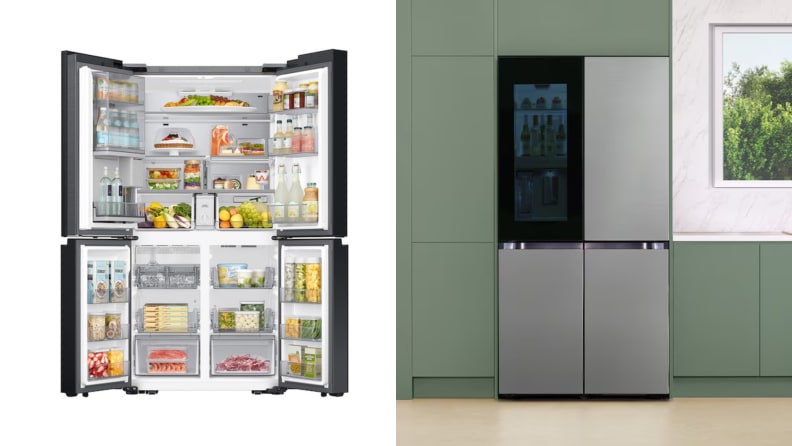
A quad-door fridge blends French-door and side-by-side styles, but adds access and flexibility.
As fridge technology has advanced, compressors are able to cool more compartments of a fridge to different temperatures, without sacrificing too much energy efficiency. Enter 4-door and quad-door fridges.
These models have a French-door fridge compartment atop either a flexible temperature drawer and a freezer drawer or another set of French doors.
In the case of a quad-door fridge, sometimes both bottom doors access freezer compartments, while other models offer one side as a flexible temperature compartment.
The Café CAE28DM5TS5 quad-door fridge utilizes the flexible temp compartment method, while the Café CVE28DM5NS5 has a flex drawer and freezer drawer below its French doors.
Columns and Built-ins: For those with specific needs
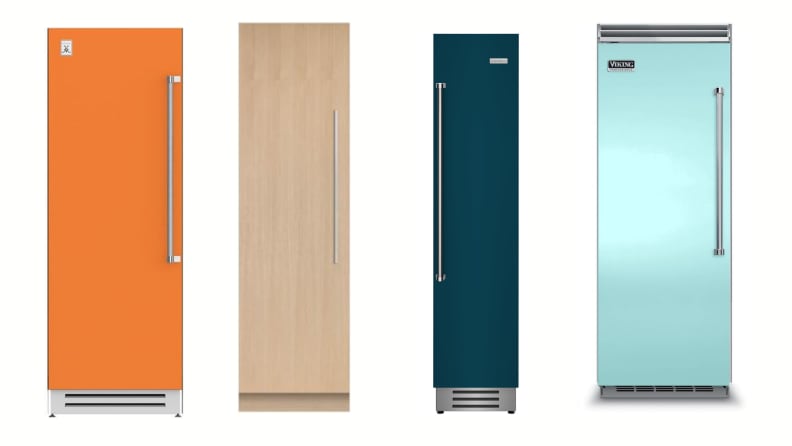
Column fridges can come in all shapes, sizes, colors, and designs.
We don’t lab-test these styles, but they’re important to understand if you’re considering a high-end kitchen build or renovation.
Columns represent the ultimate in fridge customization, and typically come as full-size top-to-bottom refrigerator or freezer—although there are some models that include both.
Column fridges are often built-in to cabinetry or concealed behind panels that match the rest of your cabinetry.
Of course, customizability comes at a price: Column fridges are more expensive than free-standing fridges.
If you want to consider a built-in column refrigerator, try the JennAir JBRFR24IGX and Frigidaire Professional Series FPRU19F8WF. Don’t forget, you’ll also need a coordinating freezer.
Counter-depth: For those with an existing enclosure or a smaller kitchen
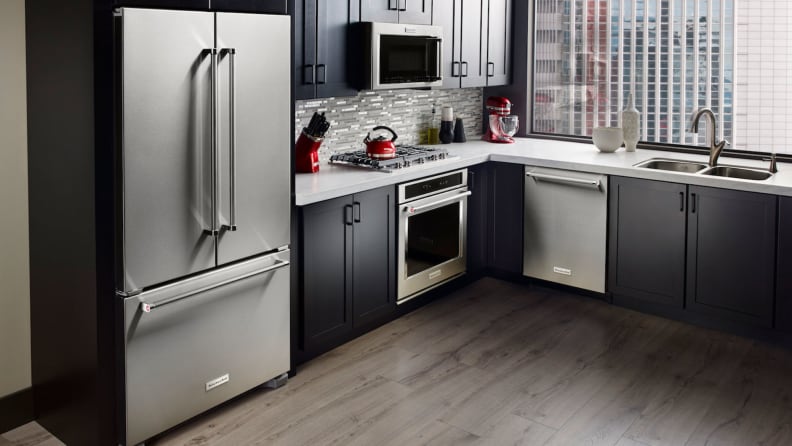
Any fridge type can also be counter-depth, roughly 26" deep, to help it sit more flush with your existing cabinetry.
Counter-depth fridges aren't necessarily a style on their own—any of the above styles of fridge can also be counter-depth.
Counter-depth fridges are typically 24 to 25 inches deep (not counting the doors or handles), which should line up flush with the rest of your cabinetry. Read dimensions carefully though, as some brands have begun to consider anything under 30 inches to be counter-depth.
If you need a counter-depth fridge, we like the Samsung Bespoke RF29BB8600AP and Bosch 800 Series B36CT80SNS.
Other factors to consider before buying
The style of fridge isn't the only thing you need to consider when buying a fridge. Modern fridges are loaded with special features, some of which are unique to certain styles, like custom-temp flex drawers, advanced smart features, and faster, fancier ice cubes.


